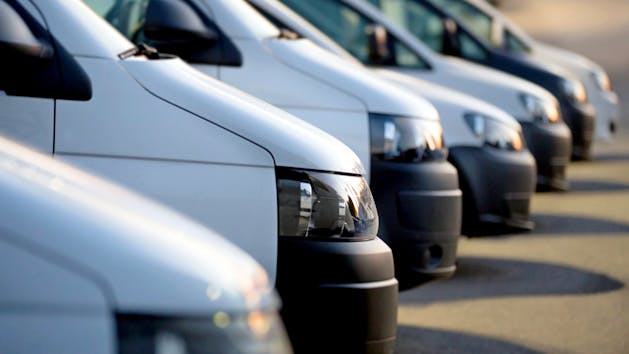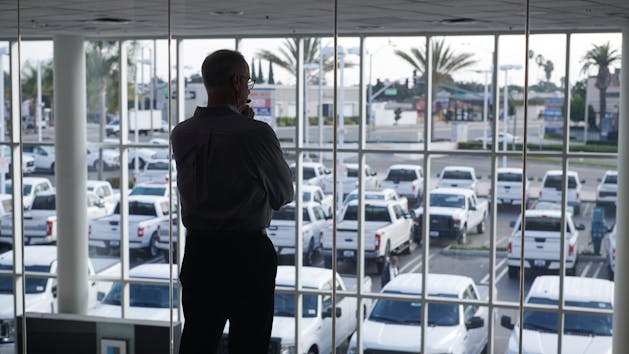Find the right solution for your business with our free Fleet Management Buyer’s Guide.
What Top-of-the-Line Fleet Safety Looks Like
The influence of technology on the fleet industry is not only increasing, but it’s also completely changing the way owners approach managing and growing their businesses. Whether you work in HVAC, landscaping or another service-based field, if you operate multiple vehicles, the way you manage them and your staff is likely going to change.
Now is the time to optimize your operation to make way for the next generation of technology-based, standard operating procedures in fleet safety. Safety regulations and compliance procedures requiring hardware installation have begun to spread across industries with no signs of slowing down. In the simplest terms, owners and operators who steadily optimize their business practices and adapt to continuous external changes will position themselves as the providers of choice while others slowly lose clients to more efficient, readily compliant operations.
When it comes to fleet management, no matter how technology influences your particular industry, one thing will remain constant: it will always be in the best interest of your operators, clients and your business as a whole to make safety a top priority. Take a look at what top fleets are doing in this highly competitive space to implement the latest technologies to enforce safe driving behavior, increase compliance, attract new clients and get the most out of their business.
Seeing the big picture: Investing in the future
When safety is a top priority for your business, it's important that you have more to rely on than blind trust to enforce that priority. Not long ago—and some would argue it remains today—skepticism ran rampant throughout the transportation industry as technology began to penetrate. Most of the conversation centered around what jobs technology might one day take away from drivers or how this new level of oversight would damage valuable trust between owners and operators, leaving little room to discuss how it might improve safety.
Today, the benefits in terms of safety, cost savings and return on investment (ROI) are much easier to quantify, but business leaders are not taking notice of these changes simply due to financial impacts. The data show, overwhelmingly, why implementing a fleet management system is in every business’ best interest when it comes to safety as well as the bottom line, including reduced insurance costs and maintenance spend. Top-performing fleets recognize that when each dollar saved is a dollar you can put back into improving your business, the cost is easily justifiable.
The savings a commercial operation retains by mitigating (or protecting against a false claim using video) even a single accident are enough to offset the cost of installing the latest fleet management technology in preparation for what’s to come in driver-support innovation, including collision mitigation, advanced cruise control and lane assist. Investment in bringing businesses up-to-speed now through the implementation of quality, reputable fleet management systems like those available through Verizon Connect is an investment in making upgrades to future tech innovations less disruptive.
Maximizing visibility through technology
Though trusting your drivers is essential to a functioning operation, it’s also important to be able to monitor, measure and coach their behavior behind the wheel. Whether staff like it or not, the fact remains driver safety as it applies to reputation will have long-lasting effects—both positive and negative—on your business. And despite incredible new strides made each day in the field of autonomous vehicles, safety is something that can never be fully automated. The responsibility for enforcing safe driving behavior lands squarely on owners, and technology is helping automate much of this oversight.
Continuing growth in average fleet size makes the ability for managers to monitor their drivers’ whereabouts and driving habits paramount to business operations running smoothly. The most recent installment of Berg Insight’s Fleet Management in the Americas report, which analyzes the latest developments in the commercial telematics market, expects the portion of non-privately owned commercial vehicles in the U.S. that have implemented fleet management technology to nearly double by 2022 (to 49.7% from 26.6% in 2017).
Telematics solutions provide managers customizable reports and dashboards allowing them to easily digest summarized, safety-related data to help managers stay involved in the day-to-day management of their drivers’ operating behaviors instead of losing valuable time that could otherwise be spent growing their business. Leveraging technology to gain insight into individual drivers on a broad scale helps address repeated behavior that can put your business at risk. Integrated fleet technologies make it easy to set benchmarks, which in turn allows owners to create a safety procedure policy for all of their drivers to follow to reduce overall risk.
For example, artificial intelligence and machine learning power the latest innovations in dash cam and video solutions that offer the ability for businesses to gain context around harsh driving events and protect against false liability claims. The advantage of such an integrated video solution is in its ability to automatically classify the severity of an event, pinging managers only when an event requires attention. From here, they have the ability to view the context around an event, taking corrective action with a driver. Using real footage of an example harsh event allows managers to customize coaching for improved outcomes.
Planning for future compliance
When it comes to compliance, top fleets are not satisfied getting by with the bare minimum requirements of today’s regulations because they realize technology is rewriting legislation as fast as its being signed into law. Compliance is a living, breathing issue and staying up-to-date on the trends shaping the fleet industry is the smartest way top fleets avoid penalties. Top companies have clear company policies reflected in what they track through their tools. This results in reduced personal liability, increased driver accountability and creates a culture of ownership on both sides of the owner-operator relationship where investment translates into positive output.
Achieving a top-of-the-line fleet is not as simple as investing in the right tools or toeing the line to stay out of trouble. Fleet owners and managers must adopt a comprehensive approach to establishing a foundation in technology as well as promoting a company culture that reflects the marriage of the two forces to best set their business up for future success.
Find out how our platform gives you the visibility you need to get more done.




